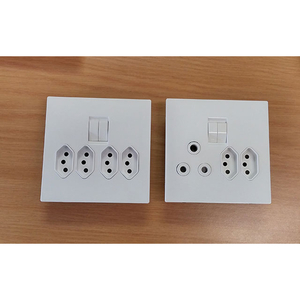South Africa to get new electrical plugs and sockets
With the adoption of an apparently much safer standard for sockets and pugs, South Africans could soon find themselves having to cope with a new type of electrical plug. Gianfranco Campetti, SABS (South African Bureau of Standards) Committee chairman says, “In 2013, SANS 164-2 was introduced as the ‘preferred standard’ for electrical plugs and sockets by the South African National Standard for the Wiring of Premises. The plan is for all new installations of plugs and sockets to be the 164-2 standard from around 2015,” says Campetti. However, there could be delays or changes.”
South Africa has long used its own, unique three-pin plug which will not fit electrical sockets used anywhere else in the world. In fact, there are more than 50 various plug and socket configurations used across the world today. Plugs and sockets based on SANS 164-2 will be available this year around April, says Campetti. However, products such as kettles, fridges and irons etc, which are fitted with the new plugs, may take a few years to arrive on the shelves of retailers. As early as the 1930s, South Africa adopted the UK standard of three large round pins, which stems from the fact that it is a former British colony. When the UK switched to flat pins in the 1970s, South Africa should have followed suit, but didn’t — mainly due to commercial reasons.
The BS 546 British standard adopted by South Africa is codified in SANS 164-0, which is made up of nine different plug and socket configurations, of both two-pin and three-pin types. The three-pin plugs are polarised and un- and are not interchangeable between electrical current ratings. At the end of the 1990s, two significant developments occurred, explains Campetti. The Europlug originally came to South Africa as a basis for mobile phone chargers, while small hand-tool manufacturers introduced the unearthed Schuko, which is a German standard, into the market. Mobile phone two-pin plug chargers are double-insulated, meaning they don’t require earth pins and convert 220V into 5V, states Campetti.
“South Africa had no choice but to hastily introduce these standards as the various device manufacturers were not prepared to make specific versions for the relatively small SA market,” states Campetti.
According to Campetti, with the introduction of these new proposed plugs, they will have three levels of safety and will be the safest plug point in the world, followed by Switzerland. Campetti says there are three elements to consider when evaluating this. He groups these under ‘technical’, ‘economic’ and ‘export’. The economic element will mean more local manufacturing and jobs, while the technical aspect means South African will have the safest plug and socket system in the world.

